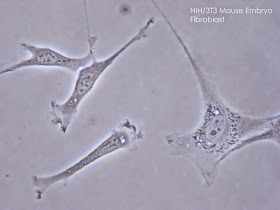By Carol Clark
Mouse lemurs can live at least eight years in the wild – twice as long as some previous estimates, a long-term longitudinal study finds.
PLOS ONE published the research on brown mouse lemurs (Microcebus rufus) led in Madagascar by biologist Sarah Zohdy, a post-doctoral fellow in Emory's Department of Environmental Sciences and the Rollins School of Public Health. Zohdy conducted the research while she was a doctoral student at the University of Helsinki.
“It’s surprising that these tiny, mouse-sized primates, living in a jungle full of predators that probably consider them a bite-sized snack, can live so long,” Zohdy says. “And we found individuals up to eight years of age in the wild with no physical symptoms of senescence like some captive mouse lemurs start getting by the age of four.”
It is likely that starvation, predation, disease and other environmental stressors reduce the observed rate of senescence in the wild, Zohdy notes, but a growing body of evidence also suggests that captive conditions may affect mental and physical function.
“We focused on wild mouse lemurs because we want to know what happens naturally when a primitive primate is exposed to all of the extrinsic and intrinsic mortality factors that shaped them as a species,” Zohdy says. “Comparing longevity data of captive and wild mouse lemurs may help us understand how the physiological and behavioral demands of different environments affect the aging process in other primates, including humans.”
The study determined ages of wild mouse lemurs in Madagascar’s Ranomafana National Park through a dental mold method that had not previously been used with small mammals. In addition to the high-resolution tooth-wear analysis for aging, fecal samples underwent hormone analysis.
The researchers found no difference between the longevity of male and female mouse lemurs, unlike most vertebrates where males tend to die first.
“And even more interestingly, we found no difference in testosterone levels between males and females,” Zohdy says. Mouse lemurs are female dominant, which may explain why their testosterone levels are on a par with males.
“While elevated male testosterone levels have been implicated in shorter lifespans in several species, this is one of the first studies to show equivalent testosterone levels accompanying equivalent lifespans,” Zohdy says.
A co-author of the study is primatologist Patricia Wright of the Centre ValBio Research Station in Madagascar and Stony Brook University. Other institutions involved in the study include Colorado State University, Duke University and the University of Arizona, Tucson.
Mouse lemurs, found only on the island of Madagascar, are the world’s smallest primates. They are among nearly 100 species of lemurs that arrived in Madagascar some 65 million years ago, perhaps floating over from mainland Africa on mats of vegetation.
Mouse lemurs weigh a mere 30 to 80 grams but in captivity they live six times longer than mammals of similar body size, such as mice or shrews. Captive gray mouse lemurs (Microcebus murinus) can live beyond age 12. By age four, however, they can start exhibiting behavioral and neurologic degeneration. In addition to slowing of motor skills and activity levels, reduced memory capacity and sense of smell, the captive four-year-olds can start developing gray hair and cataracts, Zohdy says.

Brown mouse lemurs evolved in isolation, along with nearly 100 other species of lemurs.
The wild brown mouse lemurs in the study were trapped, marked and released during the years 2003 to 2010. A total of 420 dental impressions were taken from the lower-right mandibular tooth rows of 189 unique individuals. Over the course of seven years, 270 age estimates were calculated. For 23 individuals captured three or more times during the duration of the study, the regression slopes of wear rates were calculated and the mean slope was used to calculate ages for all individuals.
“We found that wild brown mouse lemurs can live at least eight years,” Zohdy says. “In the population that we studied, 16 percent lived beyond four years of age. And we found no physical signs of senescence, such as graying hair or cataracts, in any wild individual.”
Limitations of the study include the inability to document gradual physiological symptoms of senescence in the wild. “Our results do not provide information about wild brown mouse lemurs that can be directly compared to senescence in captive gray mouse lemurs,” Zohdy says. “Further research, using identical measures of senescence, will help to reveal whether patterns of physiological senescence occur consistently across the genus and in both captive and wild conditions.”
Another confounding factor Zohdy cites is “the Sleeping Beauty effect,” the fact that wild mouse lemurs hibernate for half the year, possibly boosting their life span.
“We now know that mouse lemurs can live a relatively long time in the wild,” she says, “but we don’t know the exact mechanisms behind why they live so long.”
Related:
For the love of lemurs and Madagascar
In Madagascar: A health crisis of people and their ecosystem
















